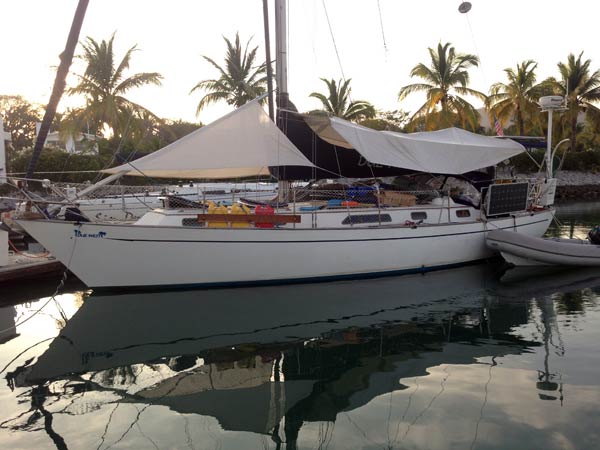HeadedToTexas
Guru
3 gallons of gasoline in a Yamaha 15 does not go as far as you'd think. Where do you Mariner 37 / Helmsman 38 owners store extra gasoline? I suppose this could apply to trawlers of all makes.
Our dinghy hangs on a Dinghy Butler, so I am wary of adding weight. The swim platform is a good idea. The bridge drains off the edges and that can mean into the cockpit. It's overboard from there too of course.
The bridge deck seating is all storage beneath with no electronics or wiring of any type. The "boxes" that form the seat are not ventilated, but that could be added. So could spill containment. Is it simply bad practice to store gas contained like that, or is it that Murphy says it will eventually get inside the boat where it would be a very bad thing?
We have room to spare on the weight limit, but I plan (at least in time) to use up that room to spare with a helm and seat upgrade. It's a Highfield CL310. The 3 gallon tank is already a tight fit in the bow locker; not sure a 6 gallon tank would fit. That extra 20 pounds in the bow would not hurt a thing ride-wise.
The bridge deck seating is all storage beneath with no electronics or wiring of any type. The "boxes" that form the seat are not ventilated, but that could be added. So could spill containment. Is it simply bad practice to store gas contained like that, or is it that Murphy says it will eventually get inside the boat where it would be a very bad thing?
We put a deck box on the fore deck. Holds our extra propane tank and up to 22 gallons of extra fuel in 5 gallon and other size tanks. No smoking on the boat, and it would probably be dissipated before it could be a problem anyway.
A deck box makes sense. Our foredeck does not have nearly the space of your 50' Beebe, but we have space on the bridge deck for a box. Ours is a propane-free boat (for now anyway), but storing extra gas is something I want to do. Does your deck box have ventilation grates to allow airflow?
Gas fumes aren't like Propane. And slow leaks from modern cans are rare if not overfilled. I don't see them as being particularly dangerous in the absence of open flame.But where will the fumes go if you have ventilation grates? Is there any path for fumes to get into the boat?
Both gas and propane fumes are heavier than air so they both will drop.

